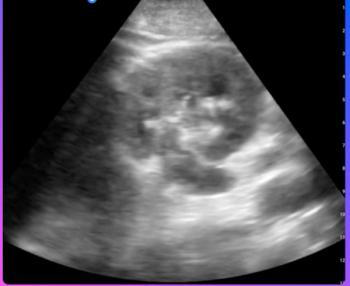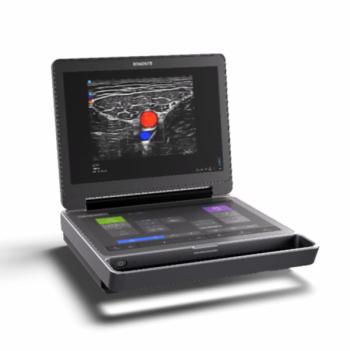
Image-guided therapy takes a new twist at ECR
Esaote is looking to break into therapy with a new take on fusion imaging. Well known for its line of MyLab ultrasound systems and niche MR scanners, the Italian company is fusing data from the two modalities in which it specializes as well as CT. It is turning its ultrasound scanners into portable workstations that provide real-time guidance during interventions.
Esaote is looking to break into therapy with a new take on fusion imaging. Well known for its line of MyLab ultrasound systems and niche MR scanners, the Italian company is fusing data from the two modalities in which it specializes as well as CT. It is turning its ultrasound scanners into portable workstations that provide real-time guidance during interventions.
Having reference CT or MR images helps interventionalists get around the uncertainties that sometimes pop up during ultrasound-guided procedures. For example, tissues can sometimes be obscured during ultrasound, when performing thermal ablation, by the gas produced when tissue is vaporized .
"Sometimes you cannot see so well under ultrasound, which is why it's good to have an MRI or CT," said Luciano Schiavini, Esaote strategic marketing and product planning manager.
Reference data from any MR or CT scanner are downloaded to an ultrasound scanner directly through a network or first onto a CD and then into the scanner. The strength of the approach is in the Esaote fusion software.
The groundwork for this approach was laid last year already with the release of the company's Virtual Navigator, a workstation separate from the ultrasound system. Now in its second generation, the Virtual Navigator has been hybridized into the ultrasound scanner, and the transformation from diagnosis to therapy is complete.
"It is a multimodality system in an ultrasound product," said Michele Zani, product manager for the Esaote MRI marketing division.
The hybrid, which entered production in February, premiered March 9 at the European Congress of Radiology in Vienna. It is now shipping in Europe, Schiavini said. The technology is currently in review at the FDA and pending release in the U.S.
Meanwhile, the company, once part of the Bracco Group but working on its own as an independent company for the past year, is looking for ways to broaden the applications of this image fusion device. Rheumatology is showing some promise, according to Zani. Luminary sites are exploring the use of fused MR images with joint tissues selectively colorized using data obtained with sonography.
Newsletter
Stay at the forefront of radiology with the Diagnostic Imaging newsletter, delivering the latest news, clinical insights, and imaging advancements for today’s radiologists.




























